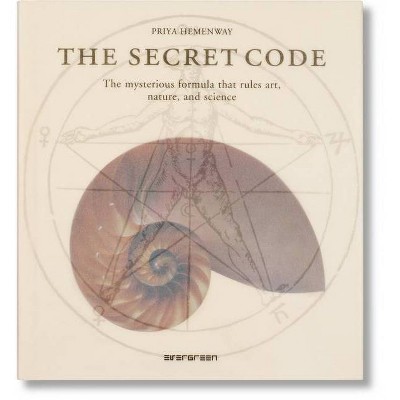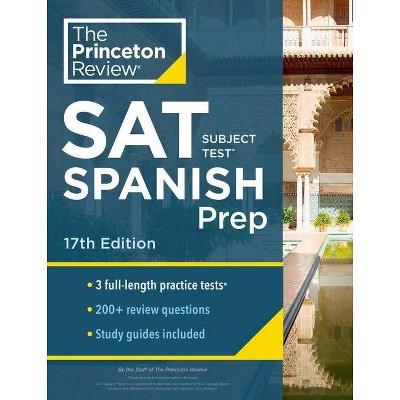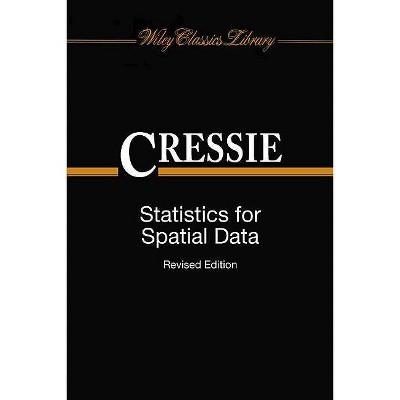The Proof Is in the Pudding - by Steven G Krantz (Hardcover)

Similar Products
Products of same category from the store
AllProduct info
<p/><br></br><p><b> About the Book </b></p></br></br><p>This book takes the reader on a journey around the globe and through centuries of history, exploring the transformations that mathematical proof has undergone from its inception at the time of Euclid and Pythagoras to its versatile, present-day use.</p><p/><br></br><p><b> Book Synopsis </b></p></br></br><p>This text explores the many transformations that the mathematical proof has undergone from its inception to its versatile, present-day use, considering the advent of high-speed computing machines. Though there are many truths to be discovered in this book, by the end it is clear that there is no formalized approach or standard method of discovery to date. Most of the proofs are discussed in detail with figures and equations accompanying them, allowing both the professional mathematician and those less familiar with mathematics to derive the same joy from reading this book.</p><p/><br></br><p><b> From the Back Cover </b></p></br></br><p>Krantz's book covers the full history and evolution of the proof concept. The notion of rigorous thinking has evolved over time, and this book documents that development. It gives examples both of decisive developments in the technique of proof and also of magnificent blunders that taught us about how to think rigorously. Many historical vignettes illustrate the concepts and acquaint the reader with how mathematicians think and what they care about.</p><p></p><p>In modern times, strict rules for generating and recording proof have been established. At the same time, many new vectors and forces have had an influence over the way mathematics is practiced. Certainly the computer plays a fundamental role in many mathematical investigations.</p><p></p><p>But there are also fascinating social forces that have affected the way that we now conceive of proof. Daniel Gorenstein's program to classify the finite simple groups, Thomas Hales's resolution of the Kepler sphere-packing problem, Louis de Branges's proof of the Bieberbach conjecture, and Thurston's treatment of the geometrization program are but some examples of mathematical proofs that were generated in ways inconceivable 100 years ago. Krantz treats all of them---and more---in some detail; he names the players and tells all the secrets.</p><p></p><p>Many of the proofs treated in this book are described in some detail, with figures and explanatory equations. The reader is given a dose of modern mathematics, and h</p></p>ow mathemati</p>cians think. Both the joy and the sorrow of mathematical exploration are communicated dynamically and energetically in this exciting new book.</p><p/><br></br><p><b> Review Quotes </b></p></br></br><br><p>"This book is to describe the essence, nature, and methodology of mathematical proof, with a strong emphasis on the change of these concepts in time. ... It is written in a very clear and suggestive manner that makes the reading pleasant and rewarding ... . Any reader will notice that the author has reached this goal in very convincing way, and the outcome is a brilliant work which should be found in every math library and department office." (Jürgen Appell, zbMATH 1318.00005, 2015)</p><p>"In this book Steven Krantz undertakes the Miltonic task of justifying the ways of (pure) mathematicians to the world at large. ... The concept of mathematical proof is at the heart of Krantz's book. ... mathematicians should find the book interesting, illuminating, provocative ... ." (J. M. Plotkin, Mathematical Reviews, Issue 2012 b)<br></p><p>"The author traces the development of the idea of proof from Euclid through computer-aided and computer-generated proofs, pointing out the way some current social trends in mathematics affect the construction of nonstandard proofs. ... This work provides good outside class reading for students--and not just mathematics majors; one could easily imagine this as a supplement to courses on the history or philosophy of science. Summing Up: Recommended. Lower-division </p>undergraduates through researchers/faculty; general readers." (D. Robbins, Choice, Vol. 49 (2), October, 2011)<p></p><p></p><p></p><p>"Krantz's book is entertaining, can be read by the early undergraduate and puts forward some serious issues. There are few math books that are useful and valuable reading for all mathematicians, but this is one of them." (Charles Ashbacher, The Mathematical Association of America, June, 2011)</p><p><br></p><p><br></p><br><p/><br></br><p><b> About the Author </b></p></br></br>Steven Krantz is a well-known Springer author. He has written nine books with Springer (1-931914-59-1, 0-8176-4339-7, 0-8176-4011-8, 0-8176-4339-7, 0-8176-4220-X, 0-8176-4097-5, 1-930190-87-5, 0-8176-4264-1, 0-8176-4285-4 ) with sales accumulating almost $130,000 in North America. Prof. Krantz is the editor-in-chief of the "society" journal (published in cooperation with Springer) "The Journal of Geometric Analysis" and is also the present editor-in-chief of the AMS Notices. "The Proof is in the Pudding, is the first of its kind. It details the history of the proof from its beginnings to its place in present-day mathematics. (This was presented as a "hot topic" in an article in the Notices of the AMS.)
Price History
Price Archive shows prices from various stores, lets you see history and find the cheapest. There is no actual sale on the website. For all support, inquiry and suggestion messagescommunication@pricearchive.us




















